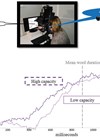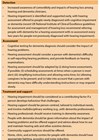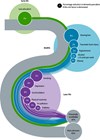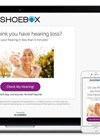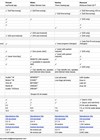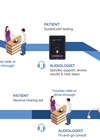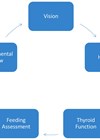Audiology features
Use of automated audiometry for faster patient access to audiology services?
Manual audiometry has long been the gold standard for establishing hearing thresholds. In recent years, a number of automated audiometry applications have reached the market. In this article, a team from Ireland have put a version of automated audiometry to...
Addressing the hearing needs of people with dementia
Dr Dawes provides a comprehensive overview of hearing needs of persons with dementia coupled with recommended guidelines for hearing-related considerations when assessing and intervening with persons with dementia. With ageing populations, we face a global dementia challenge. Rates of both...
2020 Lancet Commission on dementia: a call to action for integrated hearing healthcare
Dr Georgiou’s summary of the 2020 update to the 2017 Lancet Commission underscores the importance of medical and hearing healthcare professionals working together to tackle the modifiable risk factors that affect individuals throughout their lives, to help delay or even...
Cognition and hearing – you can’t test one with the other!
Cognitive Psychologist, Boaz M Ben-David, provides insights into the import of considering cognitive factors when assessing speech perception ability to maximise intervention success. Failing to do so, he suggests, is “ageist”, a predisposition healthcare professionals must avoid. Cognitive performance is...
Diagnosing and managing somatic tinnitus
Interactions between auditory and somatosensory pathways can lead to interesting tinnitus experiences which can be very bothersome. Dr Sarah Michiels describes her pioneering work in this area, and the possibilities of physiotherapy based therapy. Background Somatic (also called somatosensory) tinnitus...
Barriers to cochlear implantation in low resource settings
The benefits of early detection and rehabilitation of hearing loss in children, especially through cochlear implantation, are unequivocal. However, access to these valuable resources is far from equal and universal. Identifying the barriers is the first major step in addressing...
Innovating around access to hearing services during the pandemic
COVID-19 has also presented its challenges to hearing healthcare providers and to the industry and, similarly, called for innovation and creativity. Dr Bromwich describes how these sectors are rising to the challenge. The reality of COVID-19 has been a challenging...
A snapshot of UK newborn hearing screening services during the COVID-19 pandemic
During the COVID-19 pandemic, new guidance for newborn hearing screening programmes and management of audiology referrals was released by Public Health England [1,2]. There was also joint guidance from the UK professional bodies [3] and guidance from NHS England regarding...
Global audiology during COVID-19
The COVID-19 pandemic has affected, and in some areas, put a complete hold on, audiology practice around the world. In April 2020, during the peak of the pandemic for many regions, our audiology Global Ambassadors provided their reports from their...
Remote care apps: comparing the options
With much of the world in full or partial lockdown and social-distancing measures in full swing, the COVID-19 crisis has sparked renewed interest in remote teleaudiology services. Modern teleaudiology platforms, now offered by all major hearing aid brands, offer audiologists...
Making audiology work during COVID-19 and beyond
‘New normal’ is another phrase that has become synonymous with this pandemic. In this article, consideration for ‘low-touch’ and ‘no touch’ audiological pathways are described for adoption as the ‘new normal’ for hearing healthcare. The COVID-19 crisis has ushered in...
Multidisciplinary approach to managing individuals with trisomy 21
Michelle Chung and Narad Mathura outline the Down syndrome one-stop clinic; a multidisciplinary clinic introduced at the Children & Young Persons Audiology Centre (CYPAC) at Guys and St Thomas’ NHS Foundation Trust for children and young people with Down syndrome....


